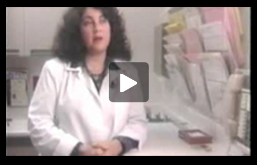Applying Temperament
Temperament and Psychopathology

Temperament is Normal but Can be Confused with Symptoms of Clinical Disorders or as Emotional or Behavioral Problems
- Even some professionals may believe that the conflict between normal temperament and the person's environment signifies an abnormal condition;
- Although the conflicts may be frequent or annoying, temperament 'fit' problems are not abnormal. There are superficial similarities with symptoms, but important elements are missing from temperament related conflict.
- In abnormal conditions there are qualitative differences in presentation and an impact on overall adjustment.
The boundaries between temperament and dysfunction can blur if these distinctions are not made. Without understanding temperament variations, it is easy to label or characterize behavioral style as pathology rather than a normally occurring trait. Clinicians need to understand the nature and limits of normal temperament dimensions. The 9 characteristics, their definitions, and examples of abnormal variations attributed to temperament are listed below:
- Activity level-the amount of physical motion exhibited during the day. Confused with ADHD hyperactive-impulsive on the active side. Low Activity can be seen as "psychomotor retardation;" Lack of movement or energy sometimes may be viewed as Depression.
- Persistence-the extent of continuation of behavior with or without interruption. High persistence can be confuses with "obsessiveness" or perseverative behavior; Very low persistence with short bursts of focus can be confused with inattentive ADHD.
- Distractibility-the ease of being interrupted by sound, light, etc unrelated behavior. Highly distractibility becomes 'inability to focus' or 'inattentive,' or "manic" when shifting quickly from one activity to another.
- Approach-Withdrawal-response to novel situations, whether approaching or withdrawing. High approach becomes "intrusive" or "impulsive"; withdrawing becomes "avoidant" or "isolating." Normal withdrawal can be confused with social anxiety disorder, separation anxiety, attachment disorder, selective mutism.
- Adaptability-the ease of changing behavior in a socially desirable direction. Gradual adaptability becomes "inflexibility"; quick adaptability becomes "easily led." Slow adaptation often confused with ADHD-inattentive, poor executive functions, ODD, OCD, Aspergers, Hypersensitivity.
- Mood-the quality of emotional expression, positive or negative. Extremes of negative mood may be seen as Depression, Bipolar rage or "anger issues"; Positive mood becomes "denial" or lack of discrimination.
- Intensity- the amount of energy exhibited in emotional expression, whether positive or negative. High intensity becomes characterized as 'explosiveness'; may also be viewed as 'manic', 'hypomanic' Extreme mildness becomes "timidity" and seen as 'hypo sensitive', 'under-responsive'.
- Sensory Threshold-the degree to which the person reacts to light, sound, taste, texture, temperaure, etc. Low threshold can be confused with "sensory sensitivities" or 'lack of emotional control'; High threshold children are nonreactive, which can be viewed as 'unresponsive' or stubborn, or 'stimulus seeking.' Associated with 'conduct problems' in young children.
- Regularity-the extent to which patterns of eating, sleeping, elimination, etc. are consistent or inconsistent from day to day. Extreme of regularity becomes "rigid" or "inflexible"; Extreme irregularity has been characterized as "dysregulation" Can be labelled as "unpredtictable" "ADHD-impulsive.".
Next Up: Temperament & ADHD












